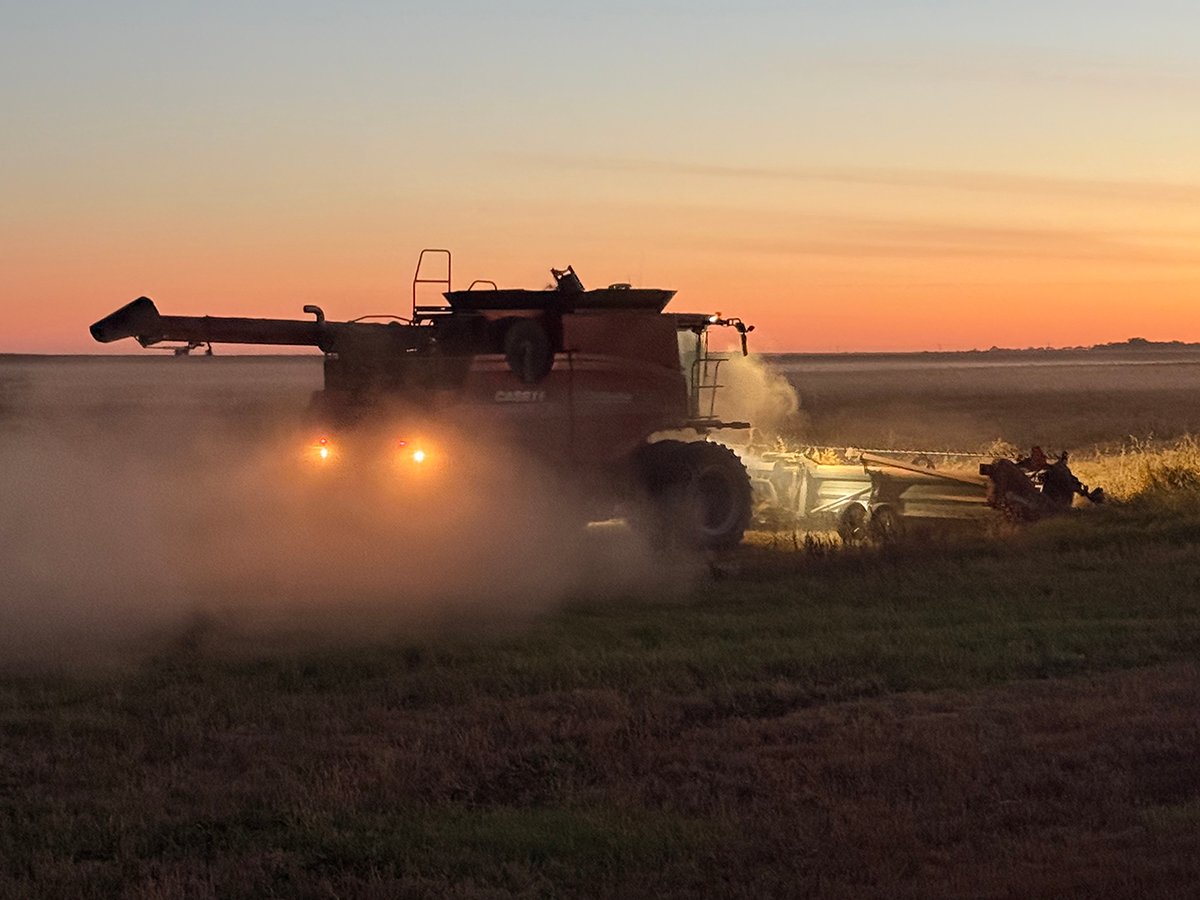At least three crops will see big acreage increases in Western Canada next year: soybeans, chickpeas and carinata. The question is whether the increase will be sustainable.
Soybeans have quickly become an important crop in Manitoba, and not just in the Red River Valley. Early predictions call for this year’s 800,000 acres to blossom into more than a million next spring. Soybean acreage is also sizable in southeastern Saskatchewan.
Most of the soybean increase will come at the expense of canola. Soybean advantages include more flooding tolerance, a low fertilizer requirement and less disease pressure.
Read Also

Downturn in grain farm economics threatens to be long term
We might look back at this fall as the turning point in grain farm economics — the point where making money became really difficult.
Soybean seed is costly, and farmers also have to add inoculant and seed treatment, but at $14 to $15 a bushel and yields of 30 and 40 bu. per acre, the returns are excellent.
Breeding advances have produced earlier maturing varieties, but some observers worry about what will happen when we get a cooler than usual summer and a killing frost in early September.
Chickpeas have had a great year in the brown soil zone of Saskatchewan and Alberta. Good moisture in the spring followed by lots of heat in July and August are just what the doctor ordered.
A decade ago, Saskatchewan chickpeas spiked to more than a million acres and then collapsed because of extreme disease pressure and a big drop in world prices.
New varieties have been developed since then with better disease tolerance, and new fungicides have been registered. Multiple spray applications are commonplace on many crops these days, and producers are more willing to spend money to make money.
Cool, wet summers with an early frost have replaced disease as the biggest risk. A lot of the crop in 2010 ended up as livestock feed, but this year the quality is excellent and returns eclipse most other cropping options.
Kabuli chickpea yields of more than 2,000 pounds per acre are routinely being reported. Overall price is often in the 33 to 35 cent per lb. range, depending on whether the seed is seven, eight or nine millimetres.
Chickpeas are extremely profitable, even with the high cost of planting seed and applying fungicides. Look for acreage to continue increasing, but don’t expect anything like the previous unsustain-able explosion.
Brassica carinata is a brand new cropping option. In the same family as canola and mustard, carinata is being championed by the biotech company Agrisoma for the oil’s potential as a bio-jet fuel. Carinata, also known as Ethiopian mustard, takes longer to mature than canola, but it survives hot, dry conditions better.
In 2012, Agrisoma contracted with 40 growers who each grew 100 to 200 acres of the crop. Most growers had good results. Yields of 30 and even 40 bu. per acre were attained. At a price of $12.50 per bu., plus a new crop incentive of $40 per acre, most growers are pleased.
Agrisoma has not announced the contract details for 2013, but the company is targeting a 10-fold acreage increase.
At 50,000 to 75,000 acres, carinata will still be a minor acreage crop, but that could change dramatically in subsequent years if all the pieces fall into place on the aviation fuel side of the equation.
At this juncture, it’s easy to predict that soybeans, chickpeas and carinata will see significant 2013 acreage increases in Western Canada. It’s much less clear what will happen to those crops beyond next year.

















